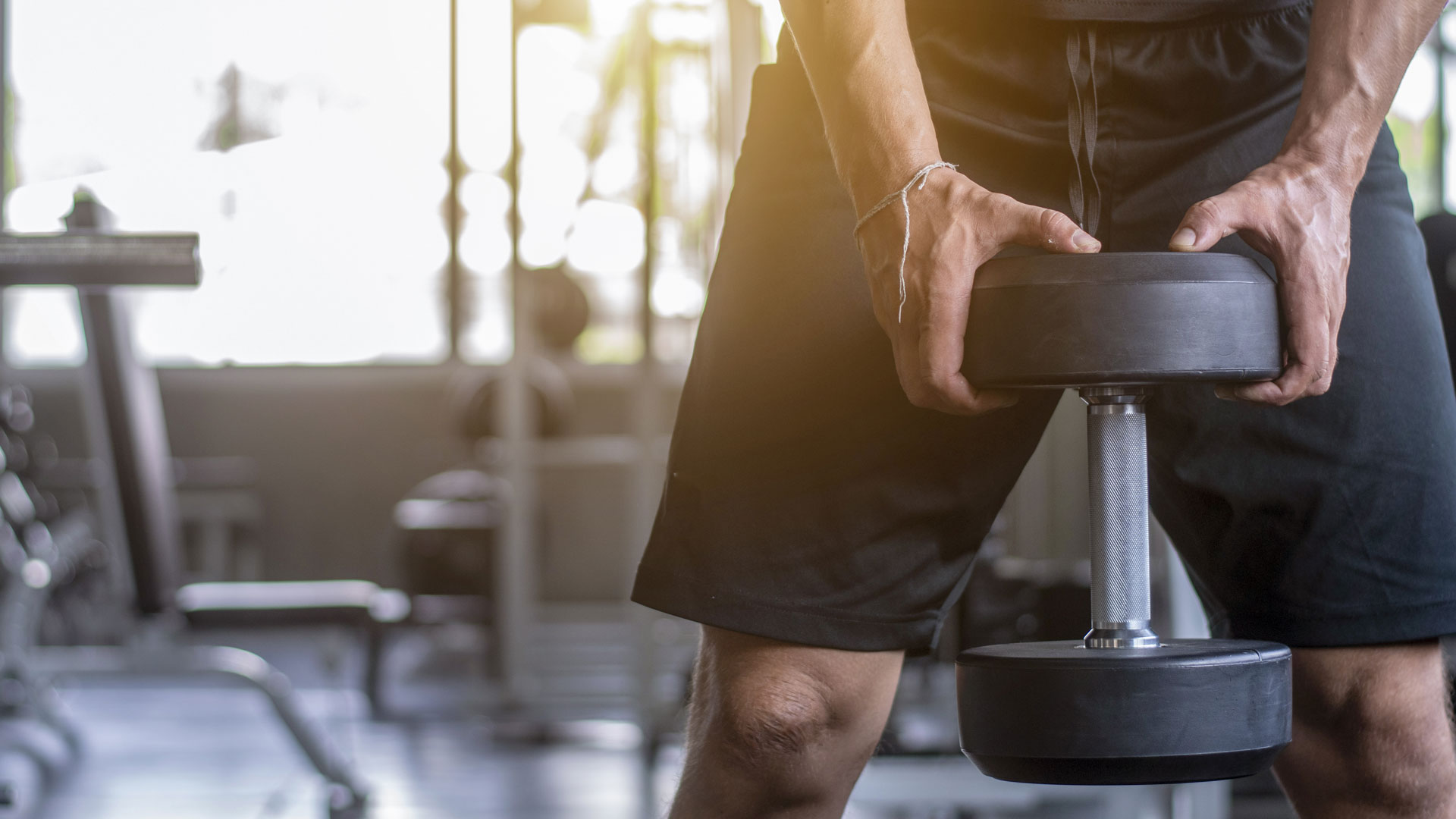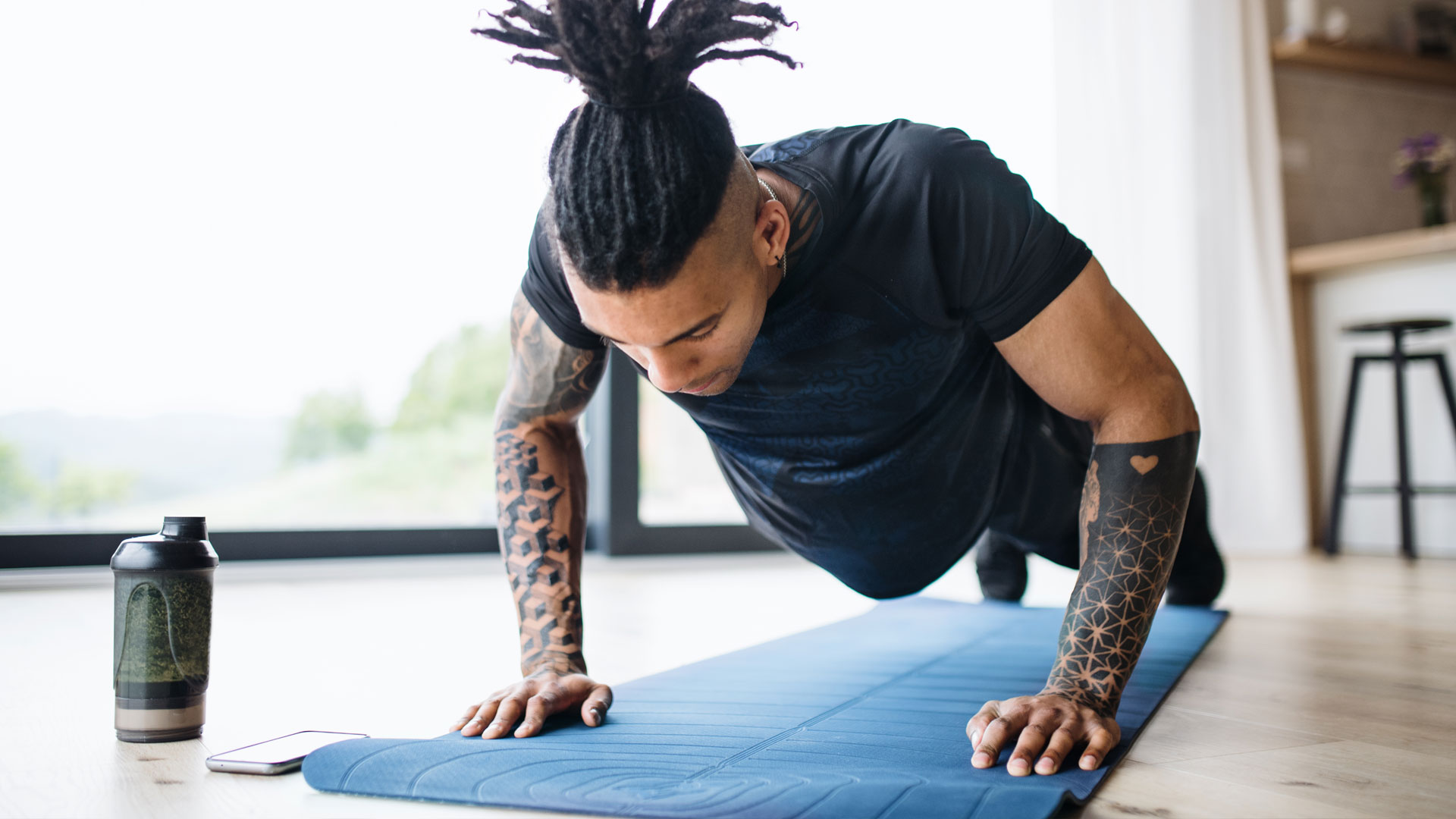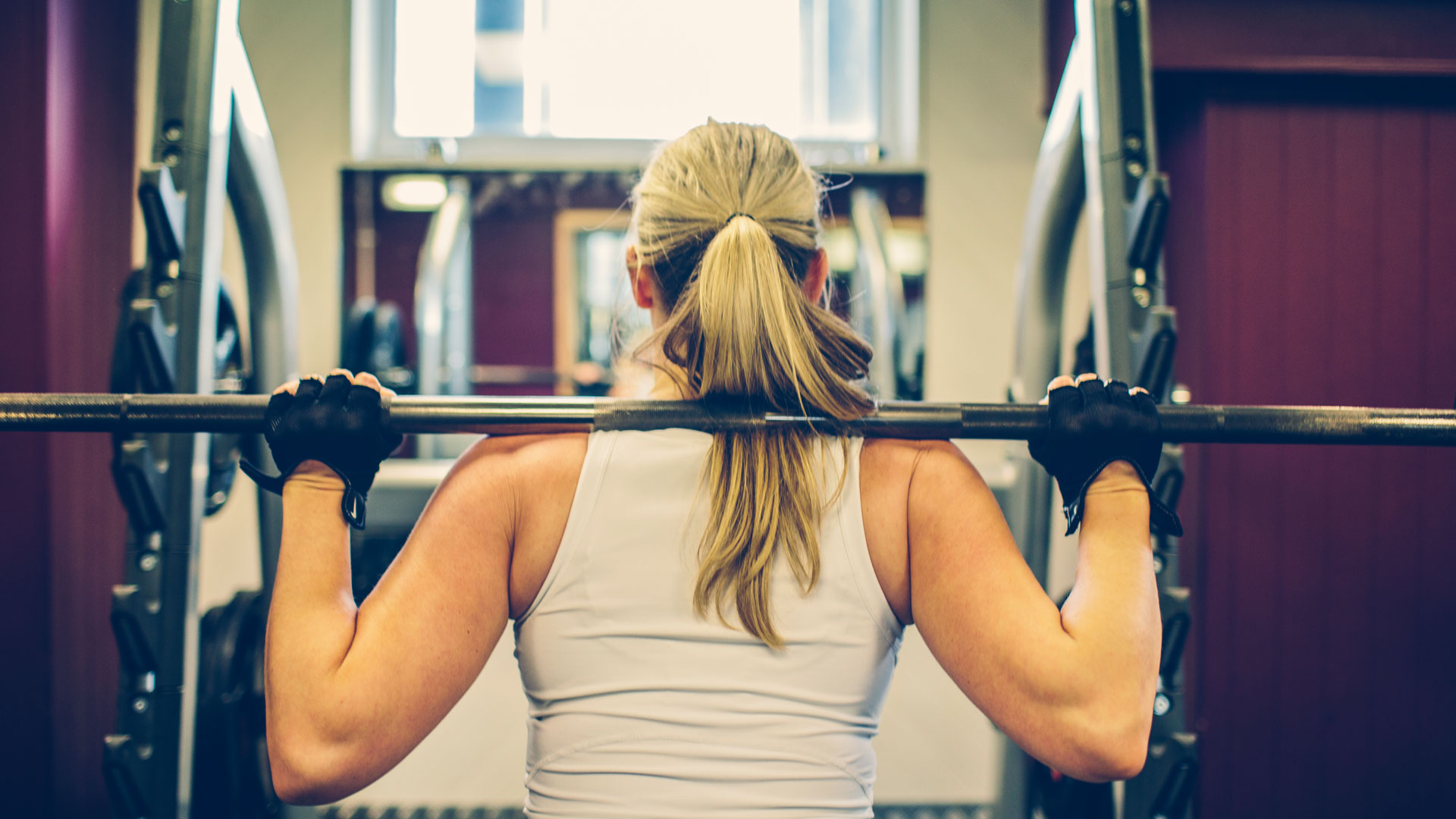How to build muscle with resistance training and diet
Wondering how to build muscle? Here's everything you need to know to tone your body


If you want to know how to build muscle, it's essential to understand what happens when you exercise and how your body repairs after a workout. Whether you want to build bigger arms, focus on core strength, or train your lower body, the key is to choose the right exercises and fuel your body with a balanced diet with plenty of protein.
When you're working out at home, it's worth investing in a set of the best adjustable dumbbells for your muscle-building routines. These customizable weights combine several dumbbells into a single unit, so you can quickly change the load mid-workout, and they'll be a great, long-lasting companion as you get stronger.
Whatever your goals, some common themes pop up when you're learning how to build muscle. Choosing the right workout to efficiently exercise your muscles without overtraining is extremely important, but so is the fuel you feed your body. We'll guide you through everything you need to know to reach your strength training, muscle-building goals in no time.
How to build muscle: how it works
The process where the body builds muscle is called muscle hypertrophy.
When you do exercise, such as lifting heavy weights, you inflict mechanical trauma on your muscle fibers. As a result, cells around the fibers go into repair overdrive, knitting together the damaged fibers and strengthening them, as well as increasing muscle mass (muscle hypertrophy). Breaking down muscle fibers over and over again increases muscle mass further. And the more trauma you inflict on the fibers, the more they increase. In other words, you’ve got to work hard to get that muscle mass up!
As well as mechanical trauma, other factors can increase muscle hypertrophy, such as metabolic fatigue or metabolic stress. This occurs when the muscle is stressed repeatedly, decreasing blood flow to the muscles and increasing metabolites, such as lactate and hydrogen ions. This, in turn, builds up an anabolic effect on the muscles which encourages swelling and growth in muscle cells.
You can achieve metabolic stress by lifting lighter weights at a faster speed, with short intervals, or by doing high-intensity interval training. The key is to do it right to the point where you can do no more and then rest briefly, before starting again.
Start your week with achievable workout ideas, health tips and wellbeing advice in your inbox.
A 2019 systematic review into maximizing muscle hypertrophy recommended combining both mechanical and metabolic stress to increase muscle mass most effectively.
Diet is also crucial when it comes to building muscle mass. Having enough energy from a healthy, balanced diet will give you the fuel you need to work out. Healthy high-protein foods help to build muscle, while carbohydrates and fats boost energy levels. Having protein before and after a training session can also help muscles to repair, stimulating growth.

How to build muscle: exercises to try
The following evidence-based exercises will help to build muscle, whether you’re a beginner, intermediate, or advanced athlete. These examples are taken from a 2019 systematic review in which researchers reviewed effective exercises within studies that resulted in muscle hypertrophy among subjects.
Parallel back squat
This is a shorter version of a standard back squat, used in weightlifting.
With the weight safely in place across the back of the shoulders, squat until the thighs are horizontal and parallel with the ground. This is the hardest place to stop at and move up from, so it builds strength in the thighs.
Aim for as many reps per set as you can do to the point of fatigue, and allow recovery time in between sets.
Leg press
The leg press is a great way to build strength into the quadriceps, but it’s important to pay attention to your form to get the most out of it.
Make sure the back and head are well-supported and place the feet about hip width apart on the footplate. Knees should be in line with the feet and at a 90-degree angle. Pushing up with the feet in a controlled motion, extend the legs until the knees have straightened but not locked, before returning smoothly to the start position.
To boost muscle hypertrophy, use a fitness band to increase the resistance, or do repetitive partial reps to fatigue the muscle. Our article on the best resistance bands can help you find one to suit.
Dumbbell curl
Choose a set of dumbbells that will allow you to train to complete failure within around 12-15 repetitions. Holding a dumbbell in each hand, keep the elbows close to the torso and the palms facing forwards.
Slowly raise the weights up to the shoulders while keeping the elbows in. Exhale while raising and inhale while lowering. Focus on contracting the biceps as you raise the weights. Aim for four sets of reps with a short recovery interval of around 60 seconds.

How to build muscle: what to eat
While it’s important to train and exercise, the right nutrition can fuel the production of lean muscle will give you the energy you need to challenge yourself physically.
The International Society of Sports Nutrition (ISSN) recommends that people who are performing high-intensity resistance training should have up to three grams of protein per kilogram of body weight every day, in order to build and maintain muscle. Where possible, they recommend consuming whole foods that contain protein. However, they also confirm that using protein supplements can be a safe and convenient way of getting more protein into the diet. Our guide to the best protein powders for women is a good place to start.
The following foods are natural sources of protein.
Eggs
Considered to be the ideal protein, eggs are easily digestible and low in fat. One large egg contains 6g of protein and just 75 calories (kcals). According to the ISSN, eggs are an important source of protein for athletes, as they can significantly increase muscle synthesis after resistance training.
Milk
Milk protein, formed from whey and casein protein, can help to increase muscle growth and strengthen bones. Studies show milk proteins can help to accelerate recovery in the muscles after mechanical stress during exercise.
One cup of milk typically provides around 8g of protein. Milk protein isolate is also available as a powder which can be added separately to soups, smoothies, and drinks to boost protein intake in the diet.
Beef
Beef protein has been found to encourage muscle growth, and may even be linked to reducing muscle damage during exercise.
A standard serving of beef (3oz) can contain around 22g of protein.
Carbohydrates
As well as protein, the ISSN recommends consuming around 3-5g of carbohydrates per kilogram of body weight every day. This rises depending on how much exercise individuals undertake.
Those performing moderate amounts of intensive training (2-3 hrs per day, 5-6 days a week) need around 5-8g. According to the Centers for Disease Control and Prevention (CDC), good sources of carbohydrates include wholegrain pasta and breads, vegetables, and fruit.
Fats
Fat is also an important part of any diet. The ISSN recommends athletes should make fats around 30% of their daily diet, upping this to around 50% while undergoing intensive and regular training. According to the CDC, healthy sources of fats include avocados, nuts and seeds, and certain types of fish, such as salmon and tuna.
How to build muscle: when to eat
The ISSN also recommend the following tips for timing eating, to optimize performance and muscle building:
- Eat a main meal around 4-6 hours before exercise
- Include a light snack 30 to 60 minutes prior to exercise
- Have a snack that combines protein and carbohydrates within 30 minutes of intense exercise
- Enjoy a meal high in carbohydrates within two hours of exercise
Now you’ve got the building blocks for increasing muscle mass, why not take a look at the best exercise machines to lose weight.
Joanne Lewsley is a freelance health and lifestyle writer who specializes in evidence-based content. She is a regular contributor to Live Science, Medical News Today, and Fit&Well.
Joanne has worked for some of the web’s biggest brands, including BabyCentre UK, BBC and Lastminute.com. She has also worked with ITV, Sky and Channel 5 in launching flagship TV websites to support broadcaster content.
Previously UK editor at parenting site BabyCentre UK, Joanne led a team of editors and freelance writers to create award-winning health content.
Moving to freelance has allowed Joanne to explore and develop her passion and expertise in creating health, wellness and lifestyle content that is clear, easy to read and based on solid evidence.
She also regularly reviews health and wellness gadgets and tech for a fleet of websites, including Top Ten Reviews and LiveScience.
As well as creating long-form content, Joanne has a keen news sub-editor’s eye, creating compelling news headlines and packages for breaking news on the AOL and Yahoo websites.
In her spare time, she loves visiting the Norfolk Broads close to her home in Norwich, trying to break the 5k barrier on her running, and indulging in her love of live music.
